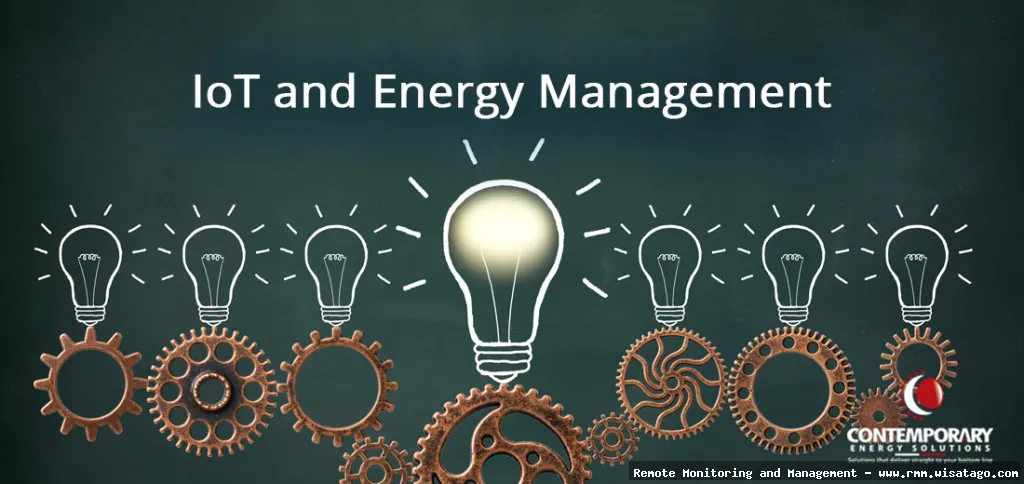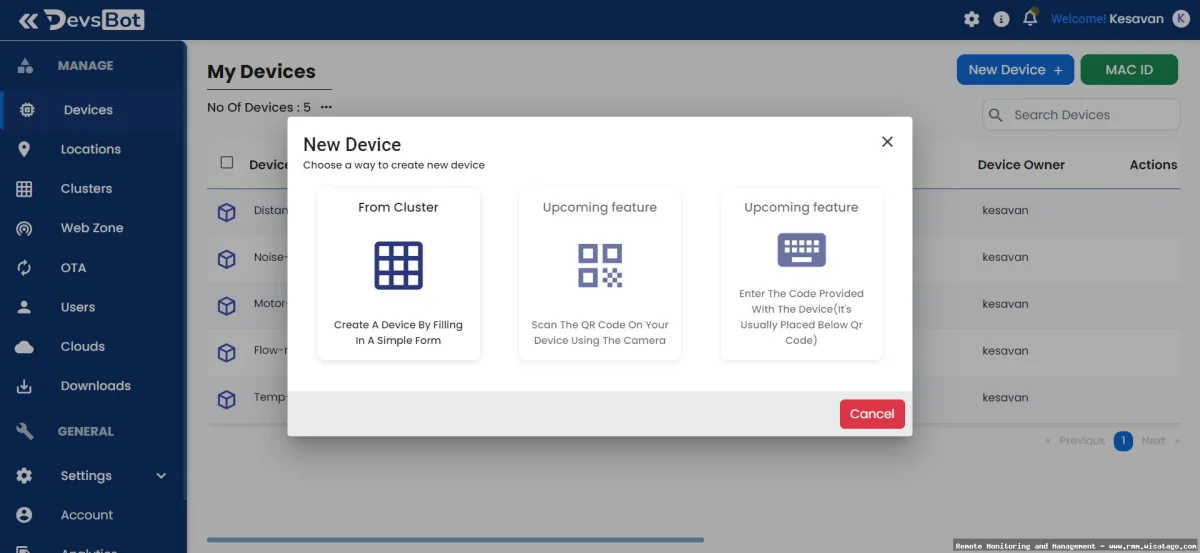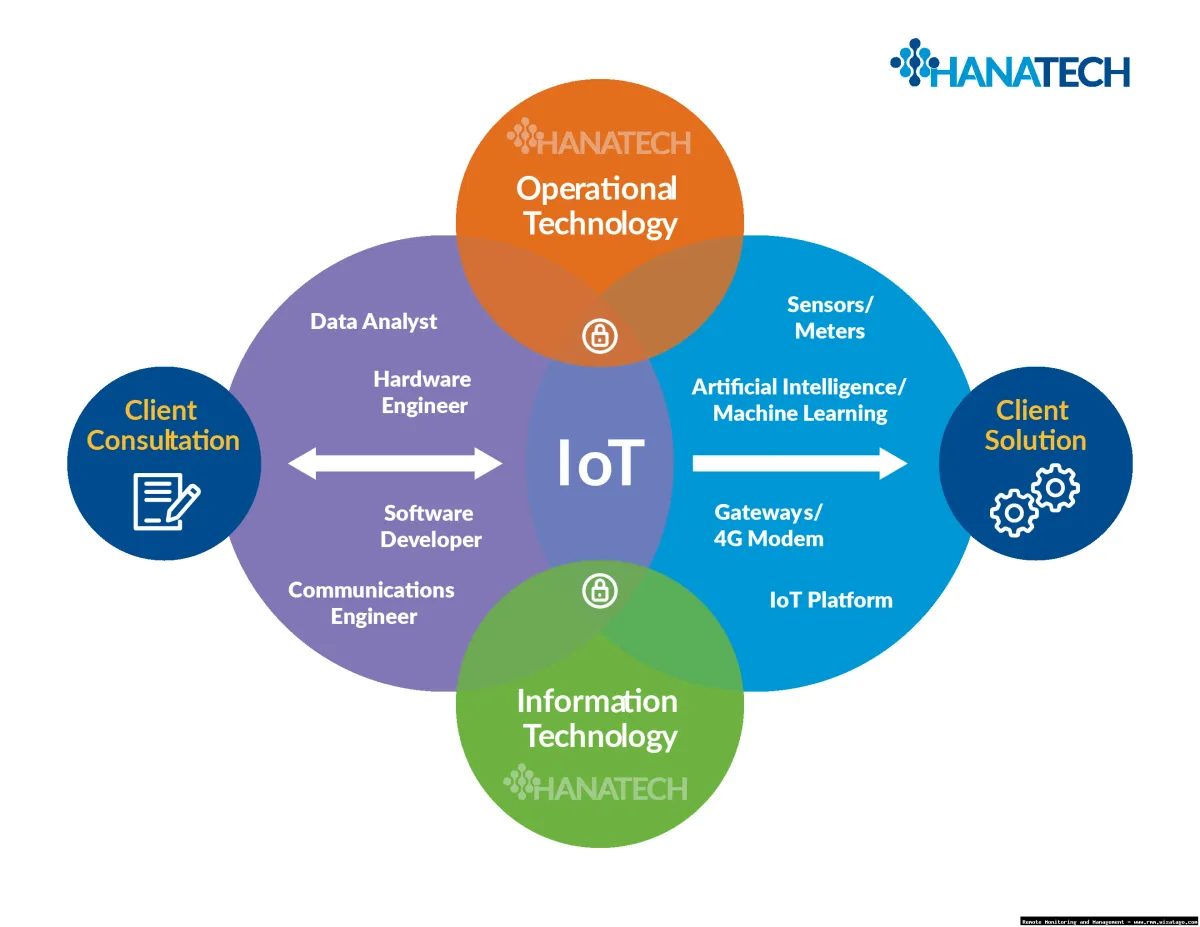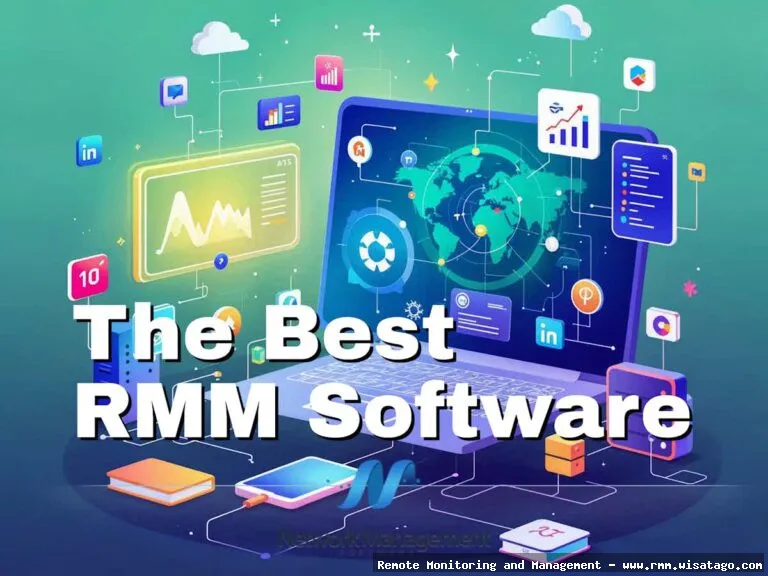The Internet of Things (IoT) has exploded, transforming industries from manufacturing and healthcare to retail and smart cities. We’re surrounded by connected devices, each generating data and offering new possibilities. But this proliferation of devices also presents a significant management challenge. How do you effectively monitor, manage, and secure hundreds, even thousands, of IoT devices scattered across different locations? Traditional IT management tools simply aren’t designed for this scale and complexity.
That’s where next-generation Remote Monitoring and Management (RMM) tools come in. These aren’t your grandfather’s RMM solutions. We’re talking about platforms specifically designed to handle the unique demands of IoT, offering features like automated device onboarding, real-time monitoring, proactive alerting, and robust security protocols. They bridge the gap between traditional IT infrastructure and the diverse, often resource-constrained, world of IoT devices.

In this guide, we’ll dive deep into IoT management through next-generation RMM tools. We’ll explore the key features that differentiate them from traditional solutions, examine real-world use cases, discuss the benefits and challenges of implementation, and provide insights to help you choose the right RMM platform for your IoT needs. Get ready to navigate the complexities of IoT management with the power of next-generation RMM.
Understanding the Unique Challenges of IoT Management
Managing IoT devices is fundamentally different from managing traditional IT assets like servers and workstations. Here’s why:
Scale and Distribution
IoT deployments often involve a massive number of devices, potentially spread across vast geographical areas. Imagine a smart city with thousands of sensors monitoring traffic, air quality, and infrastructure. Managing this scale requires tools that can handle the sheer volume of devices and the complexity of the network topology.
Device Diversity
IoT devices come in all shapes and sizes, running different operating systems, using various communication protocols (e.g., MQTT, CoAP, LoRaWAN), and having varying levels of processing power and memory. This heterogeneity makes it difficult to standardize management practices and requires RMM tools that can support a wide range of devices and protocols.
Security Risks
IoT devices are often resource-constrained and may lack robust security features, making them vulnerable to cyberattacks. A compromised IoT device can be a gateway to the entire network, potentially exposing sensitive data or disrupting critical operations. RMM tools need to provide comprehensive security features, including vulnerability scanning, patch management, and intrusion detection.
Data Management
IoT devices generate massive amounts of data, which needs to be collected, processed, and analyzed. This data can provide valuable insights into device performance, operational efficiency, and customer behavior. However, managing this data deluge requires sophisticated data management capabilities, including data filtering, aggregation, and storage.
Remote Access and Control
Many IoT devices are deployed in remote or inaccessible locations, making it difficult to perform maintenance or troubleshoot issues. RMM tools need to provide secure remote access and control capabilities, allowing IT teams to diagnose and resolve problems without physically visiting the device.
Key Features of Next-Generation RMM Tools for IoT
Next-generation RMM tools are designed to address the unique challenges of IoT management. Here are some of the key features to look for:
Automated Device Onboarding
Simplifies the process of adding new IoT devices to the management platform. This includes automatic device discovery, configuration, and provisioning, reducing manual effort and minimizing errors.
Real-Time Monitoring and Alerting
Provides continuous visibility into the health and performance of IoT devices. This includes monitoring key metrics like CPU utilization, memory usage, network connectivity, and battery life. Proactive alerting notifies IT teams of potential issues before they impact operations.
Remote Access and Control
Enables IT teams to remotely access and control IoT devices, allowing them to diagnose and resolve problems, install updates, and configure settings. Secure remote access protocols are essential to protect against unauthorized access.

Firmware and Software Updates
Automates the process of updating firmware and software on IoT devices. This is crucial for patching security vulnerabilities and ensuring that devices are running the latest versions. RMM tools should support staged rollouts and rollback capabilities to minimize disruption.
Security Management
Provides comprehensive security features, including vulnerability scanning, patch management, intrusion detection, and malware protection. RMM tools should integrate with security information and event management (SIEM) systems to provide a holistic view of security threats.
Data Analytics and Reporting
Collects and analyzes data from IoT devices, providing insights into device performance, operational efficiency, and customer behavior. RMM tools should offer customizable dashboards and reports to visualize data and identify trends. Effective IT management often requires tools such as RMM to remotely monitor and manage client systems
.
Protocol Support
Supports a wide range of IoT communication protocols, including MQTT, CoAP, LoRaWAN, Zigbee, and Bluetooth. This ensures that the RMM tool can manage diverse IoT devices and networks.
API Integrations
Integrates with other IT management systems, such as help desk software, asset management databases, and security information and event management (SIEM) systems. This allows for seamless data sharing and workflow automation.
Real-World Use Cases of IoT Management with RMM
Next-generation RMM tools are being used across a wide range of industries to manage IoT deployments. Here are some examples:
Smart Manufacturing
Monitoring sensors on manufacturing equipment to detect anomalies and predict failures. This can help to reduce downtime, improve efficiency, and optimize maintenance schedules. RMM tools can also be used to manage industrial control systems (ICS) and ensure their security.
Healthcare
Managing connected medical devices, such as patient monitors, infusion pumps, and wearable sensors. This can improve patient care, reduce medical errors, and optimize resource allocation. RMM tools can also be used to ensure the security and privacy of patient data.
Retail
Monitoring sensors in retail stores to track inventory levels, monitor customer traffic, and optimize energy consumption. This can help to improve the customer experience, reduce costs, and increase sales. RMM tools can also be used to manage digital signage and point-of-sale (POS) systems.
Smart Cities
Managing sensors and devices in smart cities to monitor traffic, air quality, and infrastructure. This can help to improve public safety, reduce congestion, and optimize resource utilization. RMM tools can also be used to manage smart streetlights, smart parking systems, and smart waste management systems.
Agriculture
Monitoring sensors in agricultural fields to track soil moisture, temperature, and nutrient levels. This can help to optimize irrigation, fertilization, and pest control, leading to increased yields and reduced costs. RMM tools can also be used to manage drones and other agricultural robots.

Benefits of Implementing Next-Generation RMM for IoT
Implementing a next-generation RMM tool for IoT can provide numerous benefits, including:
Improved Device Uptime
Proactive monitoring and alerting can help to identify and resolve issues before they impact device uptime. Remote access and control capabilities allow IT teams to quickly diagnose and fix problems without physically visiting the device.
Enhanced Security
Comprehensive security features, such as vulnerability scanning, patch management, and intrusion detection, can help to protect IoT devices from cyberattacks. RMM tools can also help to enforce security policies and compliance regulations.
Reduced Operational Costs
Automated device onboarding, remote access, and firmware updates can reduce manual effort and minimize the need for on-site visits. Data analytics and reporting can provide insights into device performance and operational efficiency, helping to optimize resource allocation.
Increased Efficiency
Centralized management of IoT devices can streamline operations and improve efficiency. RMM tools can automate tasks, such as device configuration, monitoring, and maintenance, freeing up IT teams to focus on more strategic initiatives.
Better Data Insights
Data analytics and reporting can provide valuable insights into device performance, operational efficiency, and customer behavior. This data can be used to make better decisions and improve business outcomes.
Challenges of Implementing Next-Generation RMM for IoT
While next-generation RMM tools offer numerous benefits, there are also some challenges to consider when implementing them:
Complexity
Implementing and configuring RMM tools can be complex, especially for large-scale IoT deployments. IT teams need to have the expertise to properly configure the RMM tool and integrate it with other IT management systems.
Cost
RMM tools can be expensive, especially for organizations with a large number of IoT devices. IT teams need to carefully evaluate the costs and benefits of different RMM solutions to choose the right one for their needs.
Integration
Integrating RMM tools with existing IT management systems can be challenging. IT teams need to ensure that the RMM tool is compatible with their existing infrastructure and that data can be seamlessly shared between systems.
Security
RMM tools can be a target for cyberattacks, as they provide access to a large number of IoT devices. IT teams need to ensure that the RMM tool is properly secured and that access is restricted to authorized personnel.

Data Privacy
RMM tools collect data from IoT devices, which may include sensitive information. IT teams need to ensure that they are complying with data privacy regulations and that data is properly protected.
Choosing the Right RMM Tool for Your IoT Needs
Selecting the right RMM tool for your IoT deployment is crucial for success. Here are some factors to consider:
Device Compatibility
Ensure that the RMM tool supports the types of IoT devices you are using. Check for compatibility with different operating systems, communication protocols, and device manufacturers.
Scalability
Choose an RMM tool that can scale to meet your growing IoT needs. Consider the number of devices you plan to manage and the volume of data you expect to generate.
Security Features
Evaluate the security features offered by the RMM tool, including vulnerability scanning, patch management, intrusion detection, and malware protection. Ensure that the RMM tool complies with industry security standards.
Ease of Use
Choose an RMM tool that is easy to use and configure. Look for a user-friendly interface and comprehensive documentation.
Integration Capabilities
Ensure that the RMM tool can integrate with your existing IT management systems, such as help desk software, asset management databases, and SIEM systems.
Vendor Support
Choose a vendor that offers reliable support and training. Look for a vendor with a proven track record and a strong commitment to customer satisfaction.
Pricing
Compare the pricing of different RMM tools and choose one that fits your budget. Consider the total cost of ownership, including licensing fees, implementation costs, and ongoing maintenance expenses.
Conclusion
Managing IoT devices effectively requires a new breed of tools that are specifically designed for the unique challenges of this environment. Next-generation RMM tools offer the features and capabilities needed to monitor, manage, and secure IoT deployments at scale. By understanding the key features of these tools, evaluating real-world use cases, and considering the benefits and challenges of implementation, you can choose the right RMM platform to unlock the full potential of your IoT initiatives.
The IoT landscape is constantly evolving, so staying informed about the latest trends and technologies is crucial. By embracing next-generation RMM, you can ensure that your IoT deployments are secure, reliable, and efficient, driving innovation and delivering tangible business value.

As you embark on your IoT management journey, remember that a well-chosen RMM solution is more than just a tool; it’s a strategic investment that can empower your IT team, optimize your operations, and secure your connected future.
Conclusion
In conclusion, the integration of IoT devices into business operations presents unprecedented opportunities, but also introduces significant management complexities. As we’ve explored, traditional RMM tools are often inadequate for the task of overseeing the diverse and distributed nature of IoT ecosystems. Next-generation RMM solutions, equipped with enhanced features like advanced analytics, automated provisioning, and robust security protocols, are emerging as essential for effectively monitoring, managing, and securing these interconnected devices. The ability to proactively identify and resolve issues, optimize performance, and maintain comprehensive visibility across the entire IoT landscape is no longer a luxury, but a necessity for organizations seeking to leverage the full potential of IoT.
The future of IoT management hinges on the adoption of these advanced RMM capabilities. By embracing next-generation RMM tools, businesses can transform the challenge of managing a complex IoT environment into a strategic advantage. Investing in the right RMM solution will not only streamline operations and enhance security but also unlock new avenues for innovation and growth. To learn more about how next-generation RMM can benefit your organization, we encourage you to explore the resources available on leading RMM provider websites or to contact a qualified consultant for a personalized assessment of your needs. Start your journey towards optimized IoT management today!
Frequently Asked Questions (FAQ) about IoT Management through Next-Generation RMM Tools
How can next-generation RMM tools help me remotely monitor and manage my geographically dispersed IoT devices at scale?
Next-generation RMM (Remote Monitoring and Management) tools offer several key advantages for managing geographically dispersed IoT devices at scale. Firstly, they provide centralized visibility and control, allowing you to monitor the health, performance, and security of all your devices from a single dashboard, regardless of their location. This includes real-time status updates, performance metrics, and alerts for any anomalies. Secondly, these tools facilitate remote configuration and patching. You can remotely deploy software updates, security patches, and configuration changes to multiple devices simultaneously, minimizing downtime and ensuring consistent performance. Thirdly, they offer advanced automation capabilities. You can automate routine tasks such as device restarts, firmware updates, and security scans, freeing up IT staff to focus on more strategic initiatives. Finally, robust RMM tools incorporate advanced security features, including threat detection, intrusion prevention, and vulnerability management, to protect your IoT devices from cyberattacks.
What are the key security features I should look for in an RMM tool to protect my IoT deployment from potential vulnerabilities and cyber threats?
Securing an IoT deployment requires a comprehensive approach, and your RMM tool should be a cornerstone of your security strategy. Look for the following key security features: Vulnerability scanning is crucial for identifying known weaknesses in device software and firmware. Automated patching capabilities allow you to quickly deploy security updates to address identified vulnerabilities. Endpoint detection and response (EDR) provides real-time threat detection and response capabilities to identify and mitigate malicious activity on your IoT devices. Network segmentation features help isolate your IoT network from other parts of your network, limiting the impact of a potential security breach. Device authentication and authorization mechanisms ensure that only authorized devices and users can access your IoT network. Finally, data encryption protects sensitive data transmitted and stored by your IoT devices. Ensure the RMM tool complies with relevant industry standards and regulations for data security and privacy.
Besides basic monitoring, what advanced analytics and reporting capabilities do next-generation RMM tools offer for optimizing the performance and efficiency of my IoT devices?
Beyond basic monitoring, next-generation RMM tools provide sophisticated analytics and reporting capabilities crucial for optimizing IoT device performance and efficiency. Real-time data analytics allows for immediate insights into device behavior, identifying trends and anomalies that can impact performance. Predictive analytics leverages machine learning to forecast potential issues, such as device failures or performance bottlenecks, enabling proactive maintenance. Customizable dashboards and reports provide tailored views of key performance indicators (KPIs) relevant to your specific IoT deployment. Root cause analysis tools help quickly identify the underlying causes of performance issues, enabling faster resolution. Anomaly detection algorithms automatically identify deviations from normal device behavior, alerting you to potential problems. Furthermore, look for features like historical data analysis to track performance trends over time, and benchmarking capabilities to compare the performance of your devices against industry standards or best practices. These insights empower you to make data-driven decisions to improve device uptime, optimize resource utilization, and reduce operational costs.